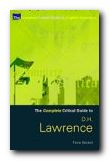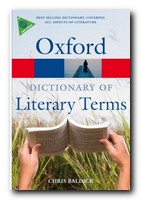sample from HTML program and PDF book
1. Commas in essays are the least emphatic pause in normal punctuation. They mark a light hesitation or interruption in the sentence. The comma is used in a number of different grammatical instances.
2. To separate two clauses when the first is not closely associated with the second:
Cars should turn left here, whilst foot passengers should continue towards the exit.
3. To introduce a pause where the eye might otherwise continue and momentarily mistake the sense of what was written:
In the beautiful valley below, the villages looked very small.
4. To separate a sequence of adjectives which qualify a noun in the same manner:
He was an arrogant, loquacious man.
5. However, when the adjectives are of a different order or type, no comma is necessary:
He was a distinguished foreign visitor.
6. To separate items in a long list:
The box contained an old leather-bound book, a bottle, some pencils, and a gun.
7. Opinions vary on the necessity of the final comma in such examples. If the items are all of the same kind, there is probably little chance of ambiguity. If they are not, it is usually safer to retain the comma.
8. To mark the beginning and end of a parenthetical phrase within a sentence:
I am quite sure, despite all my reservations on the matter, that he is doing the right thing.
9. Confusion is sometimes sown by the insertion of commas where they are not really necessary. This is an example of bad usage:
The strangest of all these new sensations, was the onset of profound happiness.
10. Commas should not be used to connect separate sentences as a casual substitute for the full stop:
A party has been arranged, it will not take place until next week.
11. This is weak writing. The statement should be made either as two separate sentences, or if they are brought together because of their natural connection, a conjunction is required:
A party has been arranged, but it will not take place until next week.
12. Even though in some cases a comma may not be absolutely necessary for retaining grammatical coherence (as in the previous example), it may still be useful in order to clarify the meaning for a reader. Here’s another bad example.
Each night you stay at a Roberts-Plaza Moat Houses UK hotel at the fully published or corporate rate you are entitled to a special discount voucher.
13. This poorly phrased statement would be improved by the insertion of a comma after the word ‘rate’.
14. What follows is an example of an entire paragraph which has been punctuated using only the comma and the full stop. [It also illustrates, rather deftly, the function of the ‘topic sentence’.]
The central thought or main controlling idea of a paragraph is usually conveyed in what is called a topic sentence. This important sentence which states, summarises or clearly expresses the main theme, is the keystone of a well-built paragraph. The topic sentence may come anywhere in the paragraph, though most logically and in most cases it is the first sentence. This immediately tells readers what is coming, and leaves them in no doubt about the overall controlling idea. In a very long paragraph, the initial topic sentence may even be restated or given a more significant emphasis in its conclusion.
© Roy Johnson 2003
Buy Writing Essays — eBook in PDF format
Buy Writing Essays 3.0 — eBook in HTML format
More on writing essays
More on How-To
More on writing skills



